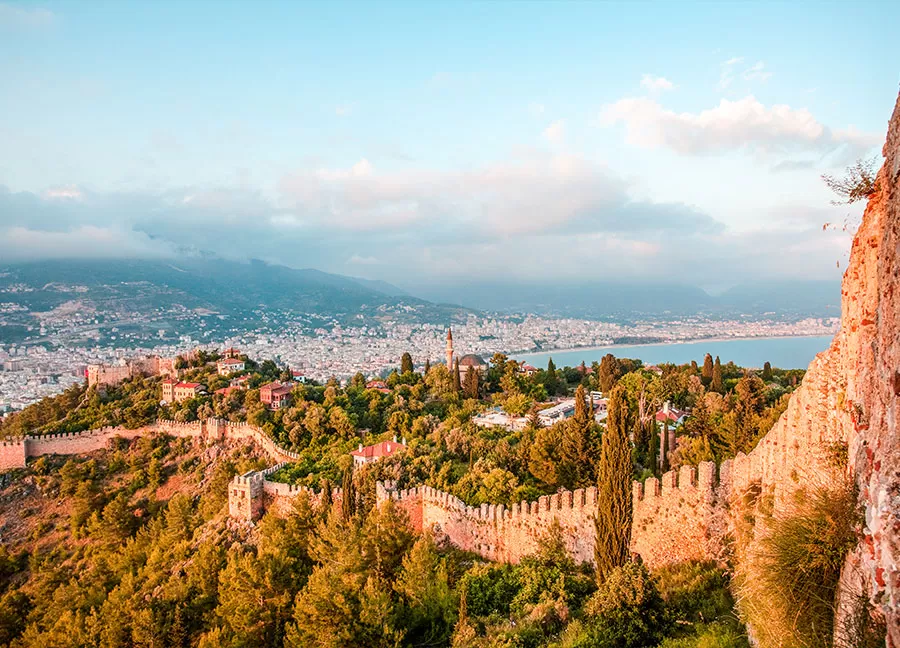
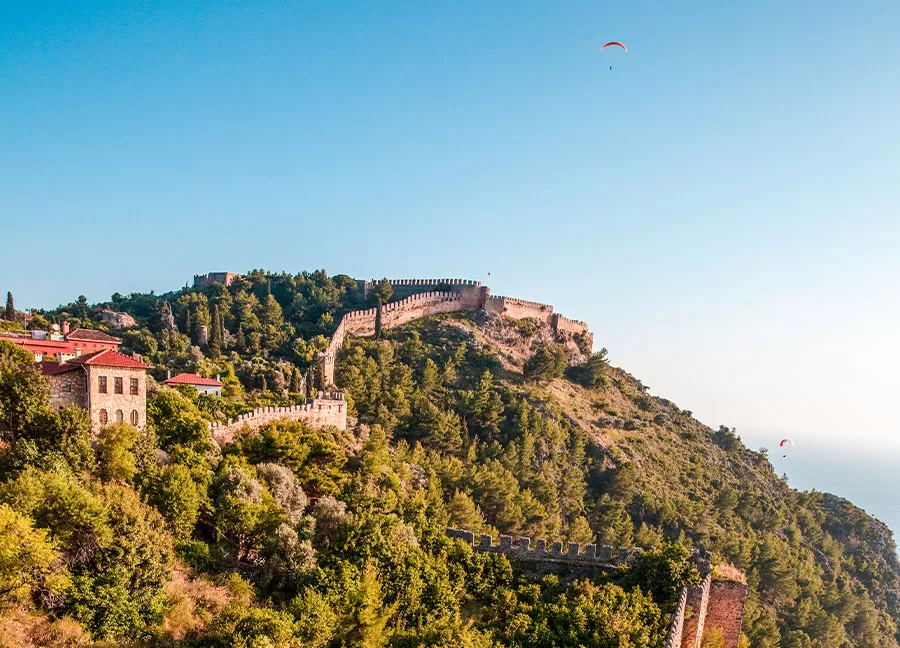
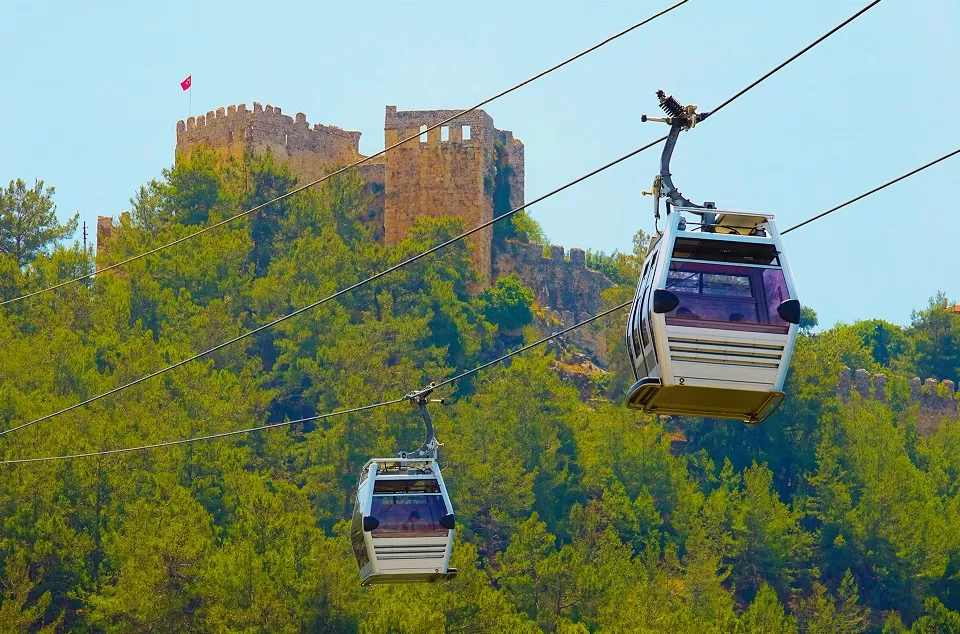
Alanya Castle
Historical Information:
Located at the top of the historical peninsula and surrounded by the city walls, İçkale is significant, with archaeological excavations dating from antiquity. This area is also surrounded by ramparts and was constructed as an interior castle. Findings unearthed in the excavations conducted in the interior fortress area reveal that this historical site in the city's acropolis was used during the Roman, Byzantine, Seljuk and Ottoman periods, starting from the third century BC. During the excavations, a bronze coin of Tryphon (160-138 BC), found at the Gate of İçkale, is believed to be among the oldest written documents.
Coins discovered in the excavations attributed to the periods of Justinus II (565-578), Constans II (641-668) and Leo IV (886-912) indicate that the settlement of the city continued during the Byzantine period and between the 6th and 10th centuries. At the site of a planned, central domed triconch (three-leaf clover) church, a three-nave basilica dating from the 6th century was found below; this was demolished by the 10th century and, rather than the church, a necropolis was constructed. The current church was built at the end of the 12th century.
Following the conquest of the city in 1221 and taking advantage of the remains of the older structures, the reconstruction of İçkale was reconsidered to establish the Seljuk Palace, the residence of the Seljuk Sultan Aladdin Keykubad I. Keykubad’s palace consisted of a complex comprising a front courtyard surrounded by two-level rooms, a ceremonial veranda where the throne was located, rooms reserved for the Sultan’s quarters, a pinnacle and a harem. The excavations indicate that the palace was richly decorated, with mosaic floors and wall frescos.
The other buildings in İçkale include the monumental fortress gate, the two-level vaulted galleries, two-storey navigational pavilions and other important structures remaining from the Seljuk Period. This area was transformed into a 'Cistern Castle' in the Ottoman era, when settlement in the upper part of the city required a need for water.
How Can I Go?:
Public transport : There is a minibus stop on the coastal side of the main road, and an Alanya bus passes every 10 minutes. You can get off at the last stop, or you can ask the minibus driver where you are going and ask him to drop you off at the nearest place.
Extra Information:
It is Possible to Use the Cable Car for Alanya Castle, For Price and Detailed Information ALANYA TELEFERİK A.Ş. You can visit website.
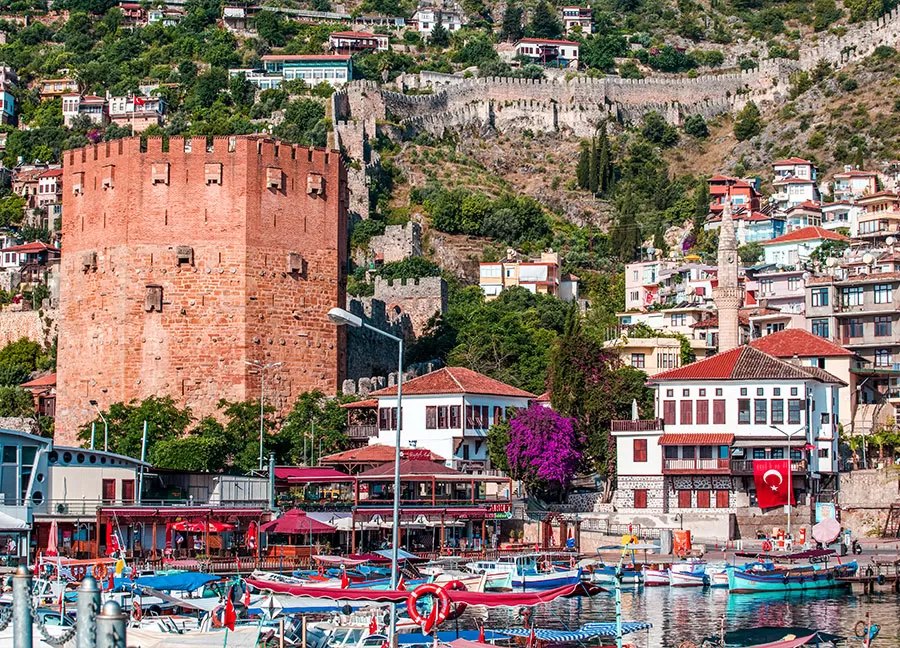
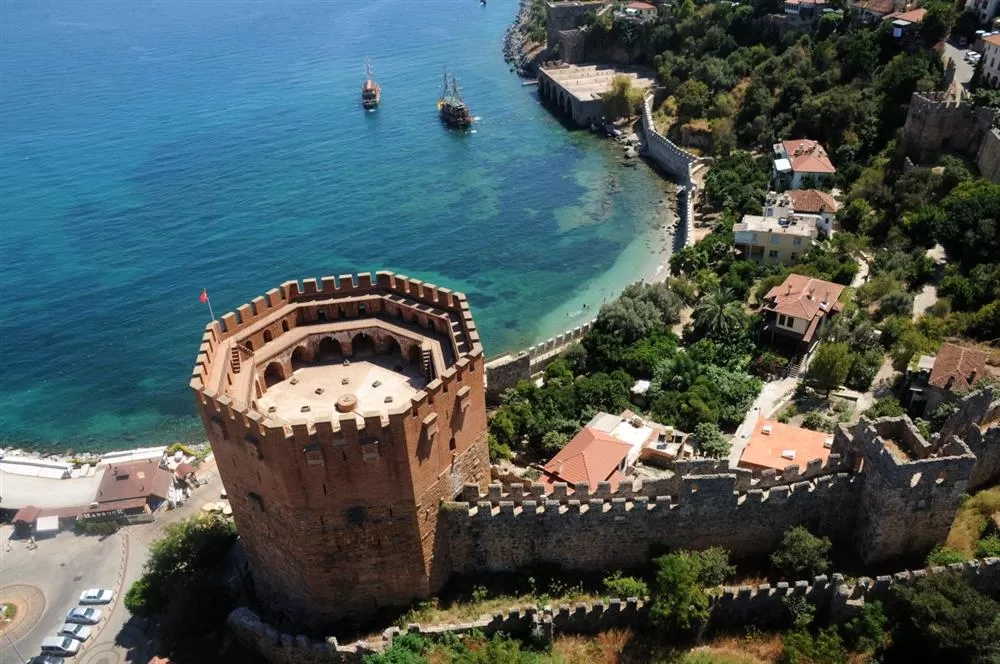
Red Tower
Historical Information:
Being one of the most unique examples of medieval Mediterranean defense structures from the 13th century, Red Tower was built by the order of Alaeddin Keyqubad I, the Seljuk ruler, given to Ebu Ali Reha el Kettani, who was a master builder from Aleppo, in order to protect the harbour, the shipyard and Alanya Castle against attacks from the sea.
The Red Tower has, and still does, attract attention with its breathtaking views and as such it has been the subject of many books. Evliya Celebi, a 17th century traveller, stated that “there is a solid octagonal tower at the seaside of the Castle of Alanya. This tower can hold two thousand (2000) men during a siege and the second gateman who lives in here has forty (40) soldiers”.
Due to having been built on a bedrock with a sloping ground, the structure is 33 meters tall at its east, but 3 meters shorter at its west. At the bottom main walls, rectangular limestones, uniformly cut and stuck together, and classic shafts were used. At the upper sections meanwhile, red bricks were used.
There is a writing that says “Gratitude to Allah” on the north wall of the structure, and below it there is a four-line inscription which is 10 meters up from the ground, written on the behalf of Alaeddin Keyqubad, which states the construction’s starting date as April 1226. There is also another writing on the south wall related to the construction. A construction inscription on the right wall of the entrance which states the name of the master who built the structure is also present. There are a total of fifty-six (56) crenel windows at the facades of the Red Tower, while there are twenty-two (22) spans for pouring hot pitch and water and six (6) gargoyles inline to repel and to make it impossible to escape.
With its octagonal plan, the Red Tower has a complex interior plan, contrary to its exterior view. The Red Tower has five floors: The ground and the first floors, the entresol, the open floor and the open terrace.
In opposition to the monumental appearance of the structure, the ground floor can be reached by a small and simple entrance and a narrow corridor, probably due to military purposes. The octagonal pillar in the centre is surrounded by a vaulted corridor. According to Ibrahim Hakkı Konyalı, during the early days of the structure, at the ground and first floors, there were lowered rooms made from wood, which extended from the beginning of the corridor vault to the upper cover, used by the guards to rest. Today, the ground floor is used as an exhibition area.
Reached by high, stone steps; a large cistern is placed on the upper part of the foot in the centre of the 1st floor. Even today, it is still functioning. The mouth of the cistern is found at the open floor.
On the floor of the corridor close to the cistern, a ventilation shaft each was placed in the centre of the octagonal sides. The door at the northwestern side of the structure, which is at the floor used as an exhibition area, opens to the exterior walls. A big ship graffiti can be seen on the right wall.
There are spans for pouring hot pitch and water at the entresol that is shaped like a narrow corridor.
There are a total of sixteen (16) air shafts placed in two rows at the mouth and at the surroundings of the cistern in the centre of the open terrace. Light can enter from these shafts and reach the first floor.
How Can I Go?:
Public transport : There is a minibus stop on the coastal side of the main road, and an Alanya bus passes every 10 minutes. You can get off at the last stop, or you can ask the minibus driver where you are going and ask him to drop you off at the nearest place.
Extra Information:
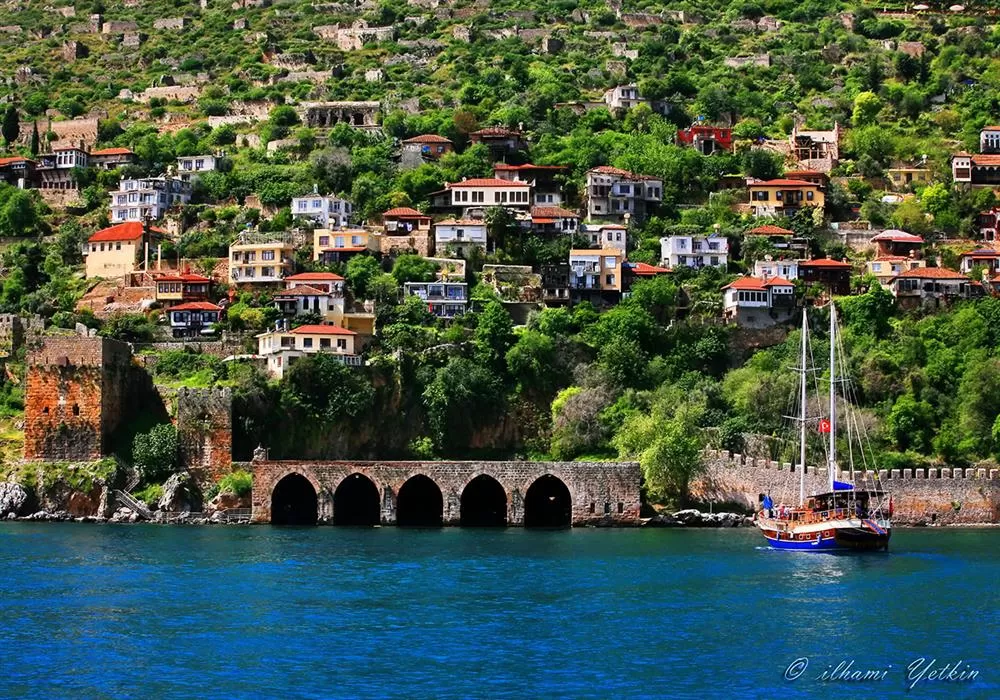
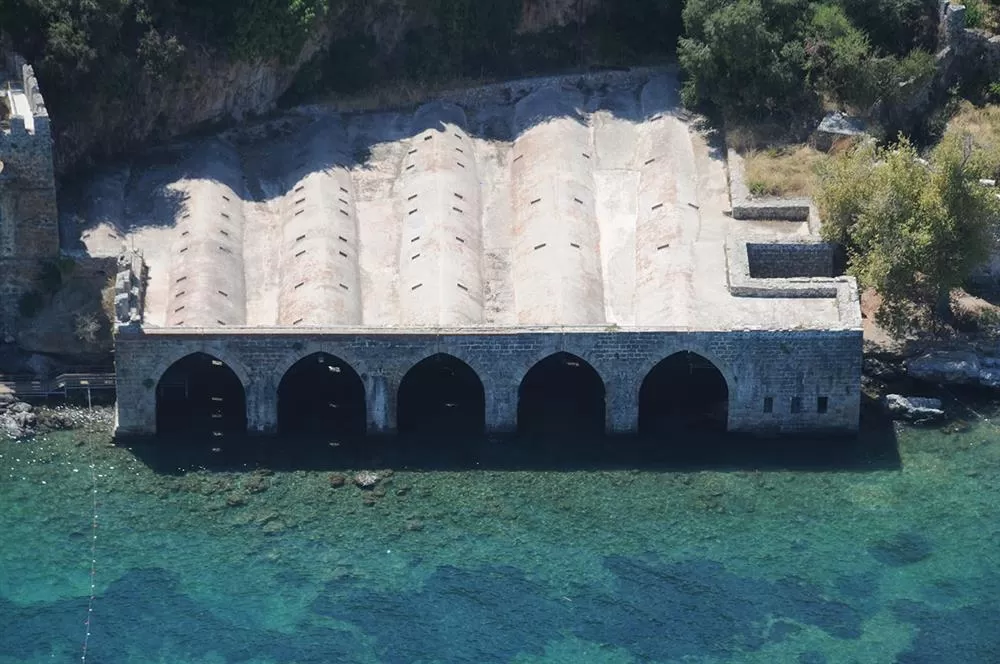
Shipyard
Historical Information:
Five – line relief inscription above narrow entrance of the structure, which entered by old harbor on north – west directions, draws the attention. In first line of the inscription, which Alaeddin I was praised as the sultan of the two lands and seas, heraldry in the middle of two rosettes can be seen. While a space with five windows on left of the entrance was used as a small mosque, right was used as an office by shipyard officers. During the work of conservation – restoration within Maritime and Ship Museum project in space of the small mosque, Zulfikar frescoes, symbolizing the justice of Hz. Ali, was uncovered on two opposing walls.
The structure of shipyard consists of five (5) vaulted division and walls with pointed arch, which separate eyes. Its walls made of ashlars and its arches and vaults from brick, ventilation flaps on vaults of the shipyard provides both entering light inside and going smoke outside. A well is found in third division of land side. The structure was built in different levels to hold less for rock fracture. A depot, which carved into the rock, has light through a hole.
Alanya shipyard is a permanent structure, which is not only a shipbuilding or stopover place in winter but also making repair, vessels and ship equipments and having iron atelier, administrative and depot areas. Permanent structures serve for two purposes. The first is to arrange the construction of big ships during winter and second is to hold unused vessels. Enemy navies or pirates were looking for strategical locations to provide big merchant benefits. Alanya had this situation and shipyard as being a part of a complex with two towers in walls, which ensured an appropriate position to protect from enemy attacks. Kitab-ı Bahriye of Piri Reis was determined that the shipyard was supervised by a Commander of Navy Force in permanent, activities of shipyard continued in period of Karamanoğulları and Alaiye Beyliks after Seljuk and ships were built during Ottoman time.
The shipyard, which shipbuilding and repair continued until years of 1960s, serves as a museum for maritime and ship in present.
How Can I Go?:
Public transport : There is a minibus stop on the coastal side of the main road, and an Alanya bus passes every 10 minutes. You can get off at the last stop, or you can ask the minibus driver where you are going and ask him to drop you off at the nearest place.
Extra Information:
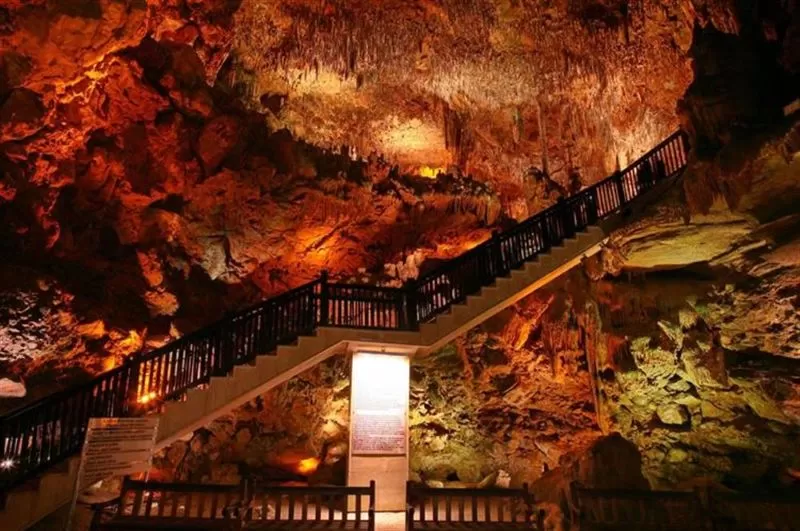
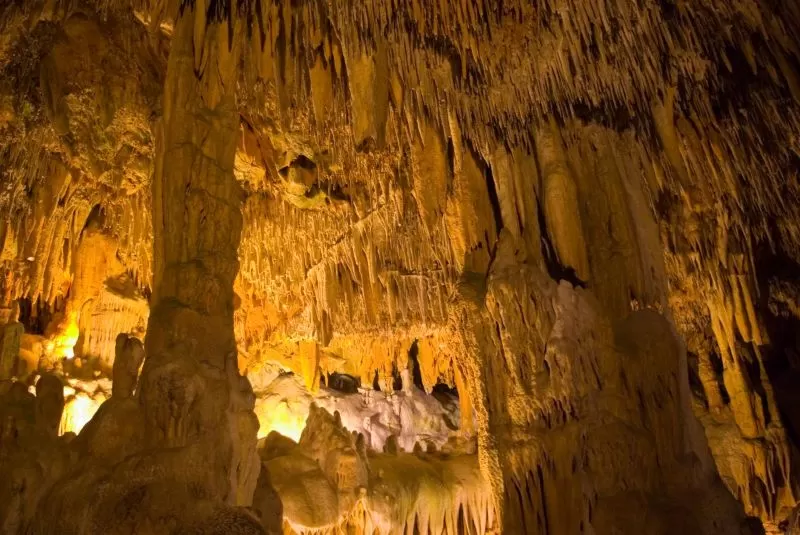
Damlataş Cave
Historical Information:
Damlataş Cave was found in 1948 when it was opened for stone pit during construction of port. Cave is on the west coast of the historical Alanya Castle. There is a 50 m at entrance of the cave. You can come to a cylindrical space after the gateway with 15 meters . After here, you can walk into the bottom of cave. Name of Cave “Damlataş” comes from the stalactite which exists by water droplets. Except of its beauty, this cave is popular because of its atmosphere helping people who have asthma illness. These people who come by doctor’s control stays in the cave for 21 days as cure. Weather of the cave doesn’t change during seasons, temperature is 22 C0, damp is %95, constant pressure is 760mm. In the weather of cave there are %71 nitrogen, % 20,5 oxygen, 2,5/10.000 (two and half to ten thousands) CO2 and some radioactive ion.
It is the first cave which was opened to tourism in Turkey.
How Can I Go?:
Public transport : There is a minibus stop on the coastal side of the main road, and an Alanya bus passes every 10 minutes. You can get off at the last stop, or you can ask the minibus driver where you are going and ask him to drop you off at the nearest place.
Extra Information:
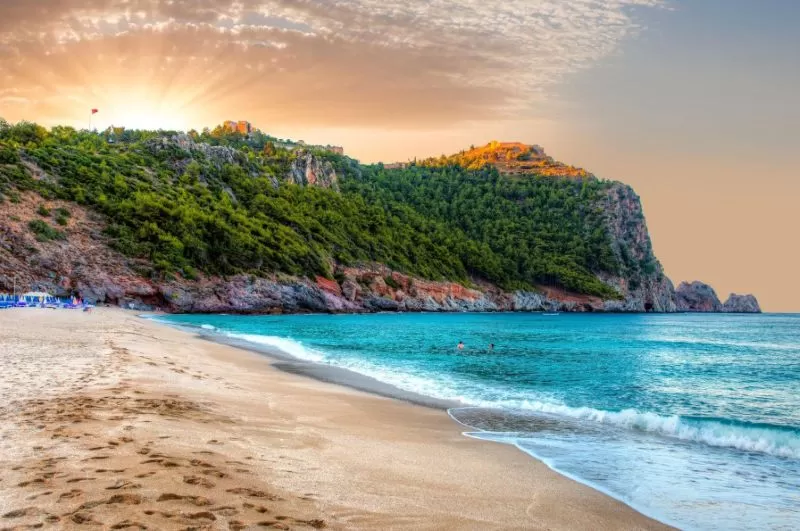
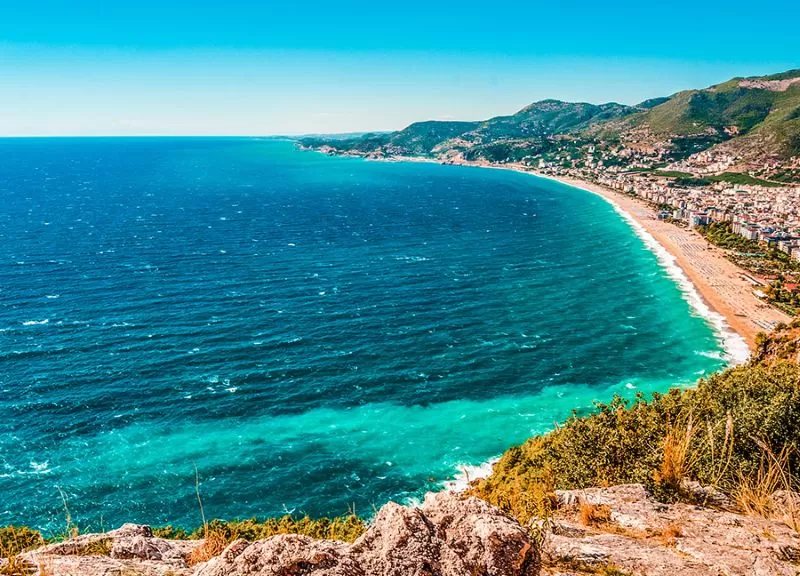
Cleopatra Beach
Historical Information:
It is on the west side of the historical peninsula and on the seafront of the Damlatas Cave. It has blue flag. Backside of beach is on the seafront of peninsula. This natural beach that is covered by rocks, it is famous with the story of Egypt Queen Cleopatra and Roman Emperor Antonius swam in here. Small cove that is known as Cleopatra that lies through the peninsula and existed with big stones. Its clarity is quality of this beach. When you swim underwater, you can see fishes and other natural beauties. You can go into the beach freely, but services on the beach has cost.
How Can I Go?:
Public transport : There is a minibus stop on the coastal side of the main road, and an Alanya bus passes every 10 minutes. You can get off at the last stop, or you can ask the minibus driver where you are going and ask him to drop you off at the nearest place.
Extra Information: